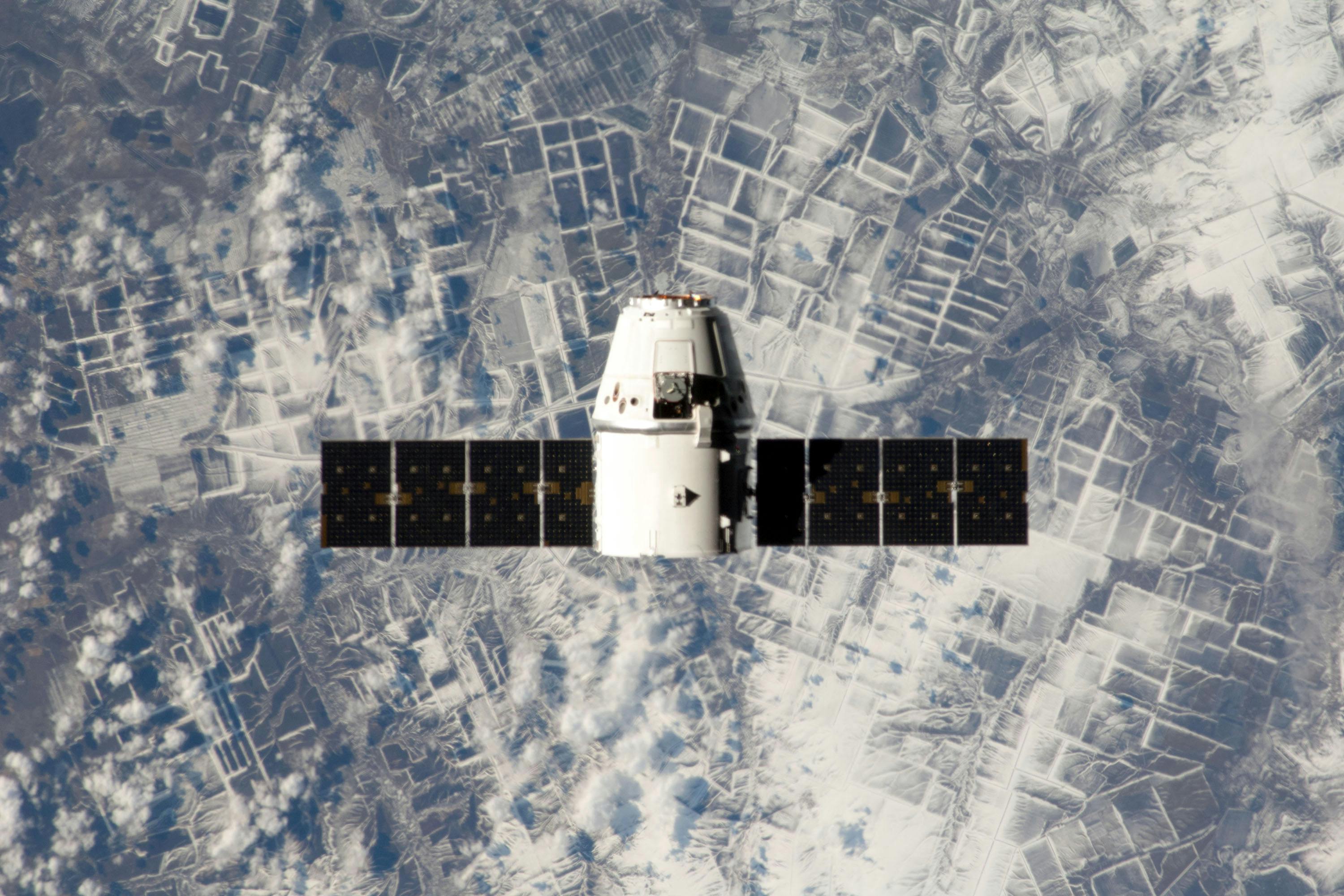· space brief · 4 min read
Space Brief 14 Apr 2025
Today's highlights include SpaceX's record-breaking Falcon launches, urgent warnings about orbital collisions, and a doubleheader launch featuring spy and Starlink satellites.

📄Top Stories
SpaceX has set new records with its Falcon 9 launches, while concerns about orbital collisions have been raised. Meanwhile, a dual launch event saw both military and commercial satellites placed into orbit, underscoring the growing pace of space activities and the potential risks they bring.
📰Detailed Coverage
SpaceX Falcon 9 Rockets into Record Books with 27th Launch
SpaceX achieved a new milestone with its Falcon 9 rocket successfully launching for the 27th time, carrying 27 Starlink satellites into orbit. The launch occurred from Cape Canaveral at midnight on April 14, marking yet another achievement in SpaceX’s ambitious reusability program.
This event not only highlights SpaceX’s efficiency in satellite deployment but also its critical role in expanding satellite internet coverage globally. The increased frequency of such launches underlines the importance of maintaining reliable satellite tracking capabilities, easily accessed via our web app’s real-time tracking feature.
Read the full story: SpaceFlight Now
Urgency in Orbital Safety as Collision Risks Rise
A report from Novaspace emphasizes that the growing number of satellites is pushing the orbital collision risk closer to a critical tipping point. With mega-constellations rapidly expanding, the report calls for enhanced space situational and domain awareness to manage and mitigate these risks effectively.
The increased deployment of satellites amplifies the potential for orbital debris, threatening both operational satellites and pivotal space missions. This development stresses the need for innovative tracking solutions and international cooperation to safeguard space assets.
Read the full story: SpaceDaily
SpaceX’s Dual Launch Spectacle: From Spy to Starlink
In a remarkable 12-hour span, SpaceX launched spy satellites for the National Reconnaissance Office from California, followed by a Starlink mission from Florida. The Falcon 9 executed both missions flawlessly, showcasing SpaceX’s ability to handle diverse payloads and mission requirements.
While specific details about the spy satellites remain classified, the subsequent Starlink launch contributes significantly to the constellation aimed at global internet coverage. This rapid succession of launches demonstrates SpaceX’s operational prowess and the increasing demand for satellite deployments.
Read the full story: SpaceDaily
SpaceX’s Continued Falcon Records and Starship Challenges
As 2025 progresses, SpaceX isn’t just breaking records with its Falcon 9 launches but also facing challenges with its ambitious Starship program. While Falcon 9’s reliability and reusability continue to set industry standards, Starship’s development encounters technical hurdles, impacting its future missions.
These developments highlight the dual narrative of SpaceX’s operational success with Falcon rockets and the persistent obstacles in realizing the Starship vision, potentially reshaping future manned missions and interplanetary travel.
Read the full story: NASASpaceFlight.com
🛰️Satellite Spotlight
- Satellite Name: JUPITER 3 (ECHOSTAR 24)
- NORAD ID: 57479
- Launch Date: 2023 Jul 29
- Mission: Communication
- Orbit: Inclination: 0.0189°, Period: 1.0027 rev/day, Eccentricity: 0.0001401
- Operator: EHNS/ECHOC
- Fun Fact: JUPITER 3 holds one of the largest payload capacities among communication satellites, enabling robust network services.
Current TLE Data:
1 57479U 23108A 25103.70308648 -.00000143 00000+0 00000+0 0 9990
2 57479 0.0189 207.7629 0001401 198.7490 313.4998 1.00269726 6342
Track this satellite in real-time on our web app: Track JUPITER 3
🚀 Upcoming Space Launches
April 14
- Blue Origin New Shepard:
- NS-31 from West Texas Suborbital Launch Site, Corn Ranch, TX, USA (13:30 UTC) NS-31 is the 11th crewed flight for the New Shepard program and the 31st in its history.
April 16
- Northrop Grumman Space Systems Minotaur IV:
- NROL-174 from Space Launch Complex 8, Vandenberg Space Force Base, CA, USA (19:00 - 21:26 UTC) Classified payload for the U.S. National Reconnaissance Office.
April 17
- SpaceX Falcon 9 Block 5:
- Starlink Group 6-74 from Space Launch Complex 40, Cape Canaveral Space Force Station, FL, USA (02:24 - 06:55 UTC) A batch of satellites for the Starlink mega-constellation - SpaceX’s project for space-based Internet communication system.
April 19
- SpaceX Falcon 9 Block 5:
- NROL-145 from Space Launch Complex 4E, Vandenberg Space Force Base, CA, USA (10:41 - 14:41 UTC) Tenth batch of satellites for a reconnaissance satellite constellation for the National Reconnaissance Office.
April 21
- SpaceX Falcon 9 Block 5:
- Dragon CRS-2 SpX-32 from Launch Complex 39A, Kennedy Space Center, FL, USA (08:15 UTC) 32nd commercial resupply services mission to the International Space Station under NASA’s contract.
April 28
- United Launch Alliance Atlas V 551:
- Project Kuiper (KA-01) from Space Launch Complex 41, Cape Canaveral Space Force Station, FL, USA (00:00 UTC) Project Kuiper is a mega constellation of satellites offering broadband internet access.
April 29
- Arianespace Vega-C:
- Biomass from Ariane Launch Area 1 (ELV), Guiana Space Centre, French Guiana (09:15 UTC) An ESA mission to measure the density of carbon stored in the world’s forests.
April 30
-
Gilmour Space Technologies Eris-1:
- Maiden Flight from Eris Pad, Bowen Orbital Spaceport (00:00 UTC) Maiden flight of Gilmour Space’s orbital launch vehicle, Eris.
-
SpaceX Falcon 9 Block 5:
- Bandwagon 3 from Space Launch Complex 40, Cape Canaveral Space Force Station, FL, USA (00:00 UTC) Dedicated rideshare flight to a mid-inclination orbit with dozens of small satellites.
Note: Launch dates and times are subject to change due to technical or weather considerations.

Maurice Stellarski




